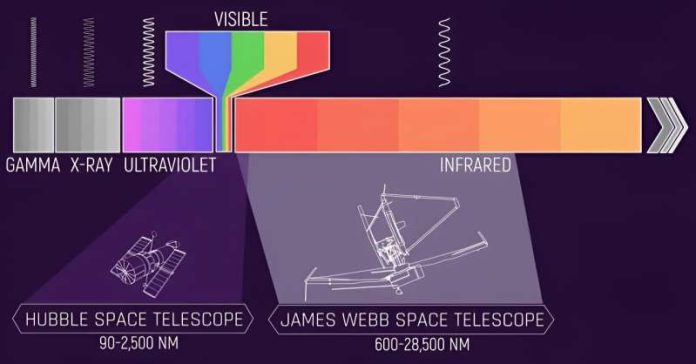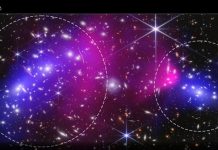
When the James Webb Space Telescope (JWST) sent back images from the far reaches of the universe, it shared a surprise with the world: galaxies so huge they challenged what we thought we knew about the cosmos.
These “ultramassive” galaxies seemed too big to exist so early in the universe’s history, according to the rules of the game set by the most trusted cosmic playbook, the Lambda Cold Dark Matter (ΛCDM) model.
This model, which has been the backbone of our understanding of the cosmos, suggests that the universe started small and grew over time, with small objects gradually coming together to form larger ones.
For decades, astronomers have used this model to explain how galaxies and other cosmic structures evolve.
The Hubble Space Telescope, launched in 1990, has been a key tool in this research, helping to refine our understanding by observing the universe in a range of light wavelengths. However, Hubble has its limits, especially when it comes to peering into the universe’s earliest days.
Enter JWST, launched in late 2021. This powerful telescope looks at the universe in near- and mid-infrared wavelengths, allowing us to see objects that Hubble can’t. This means JWST can observe the earliest galaxies, giving us a clearer picture of the universe’s infancy.
The discovery of ultramassive galaxies so early on posed a big question: Do we need to rewrite our cosmic playbook? Julian Muñoz, an assistant professor of astronomy at The University of Texas at Austin, and his team decided to tackle this question.
They published their findings in Physical Review Letters, suggesting that we might not need to change the standard cosmological model after all. Instead, we might need to rethink our understanding of how the first galaxies formed and grew.
The team compared observations from both JWST and Hubble, focusing on the most massive galaxies seen by JWST and how their existence could fit within the current model.
They considered whether changing the model to allow for more high-density regions right after the Big Bang could explain these giant galaxies.
If this were the case, Hubble should have seen many more smaller galaxies as a result of these changes. But it didn’t.
This led the researchers to speculate about other explanations for the presence of these ultramassive galaxies. One idea is that they might contain supermassive black holes, which could make the galaxies appear brighter and more massive.
Another possibility is that these galaxies aren’t actually as far back in time as they seem; instead, dust within them might make them look redder and therefore more distant than they are in reality.
The findings from Muñoz and his team offer a new perspective on our universe, suggesting that while our basic understanding remains solid, there’s still much to learn about the cosmos’s early days.
This research opens up new pathways for exploring the mysteries of the universe, reminding us of the vast unknown waiting to be discovered.
With tools like JWST, we’re just beginning to uncover the secrets of the cosmos, challenging and expanding our knowledge in the process.
The research findings can be found in Physical Review Letters.
Copyright © 2024 Knowridge Science Report. All rights reserved.



